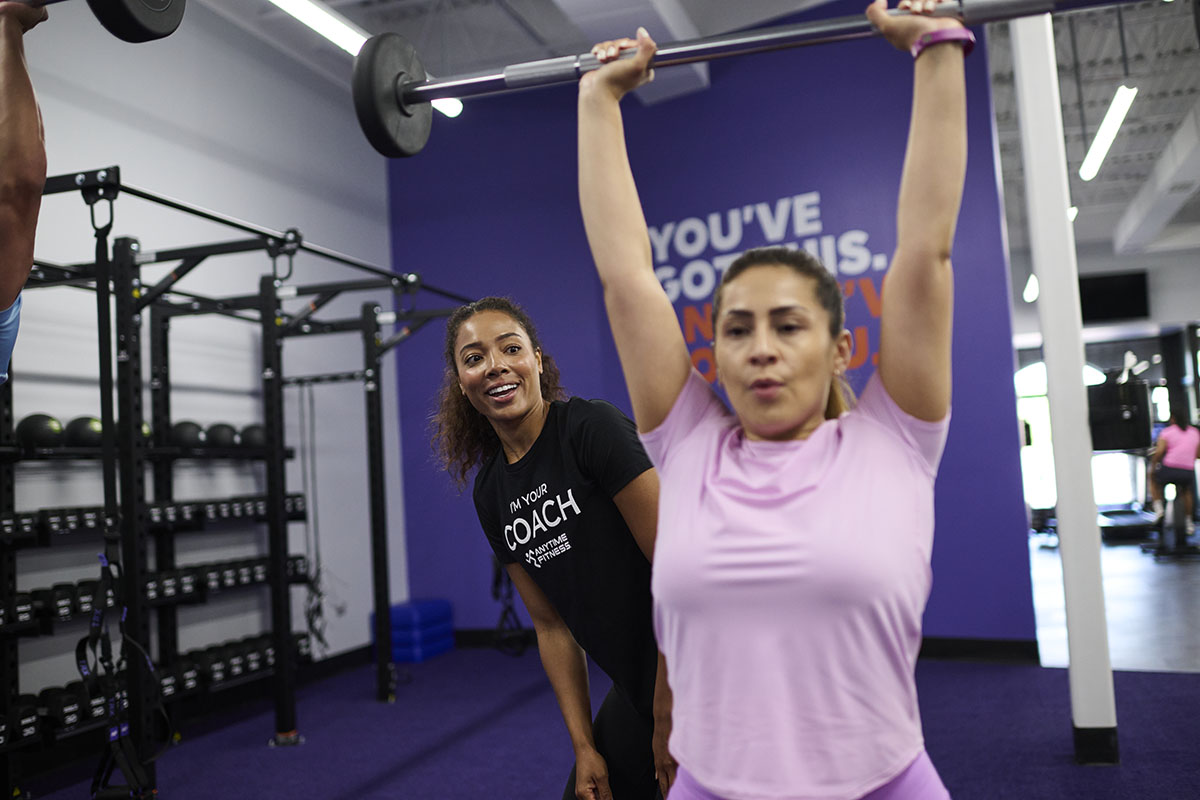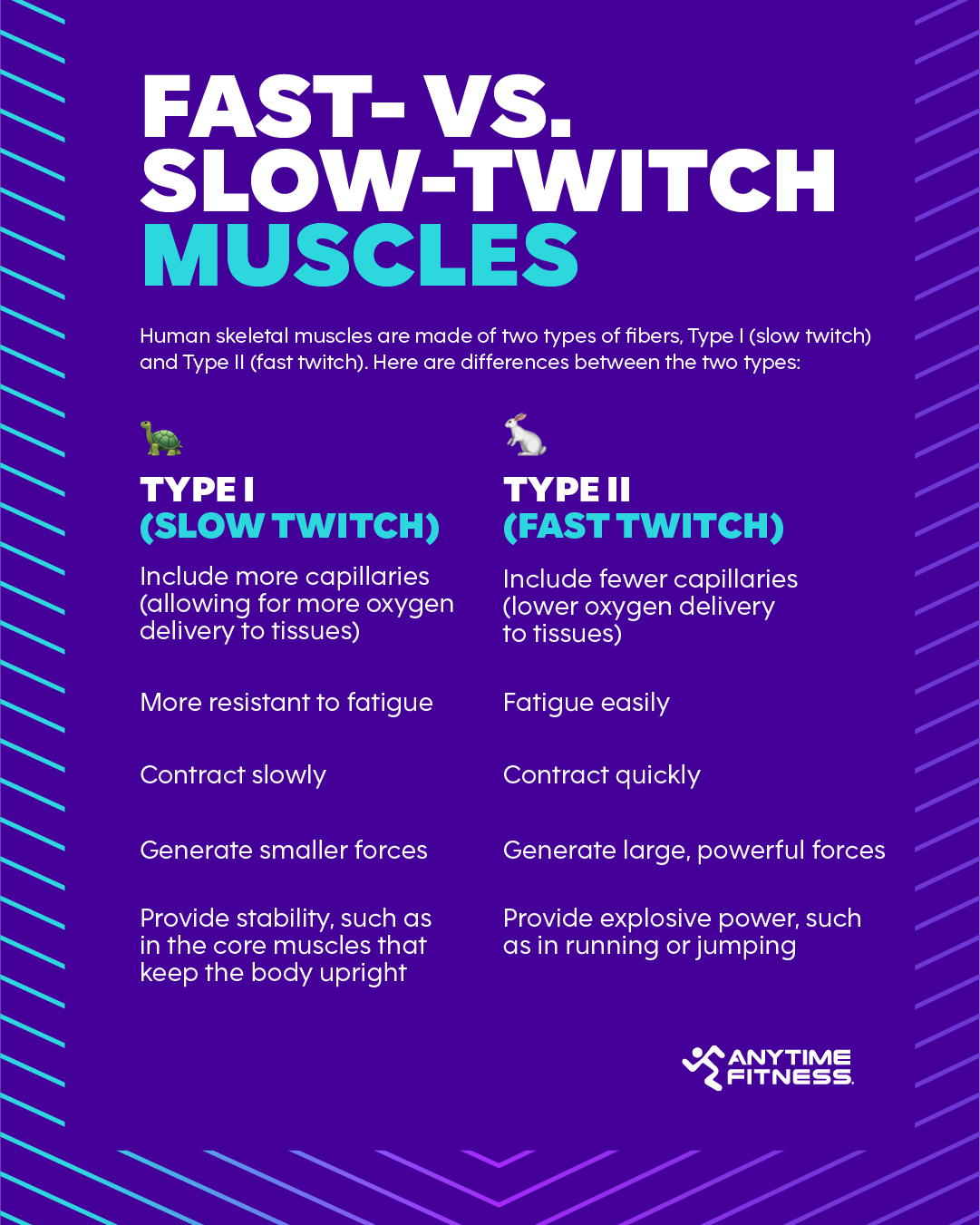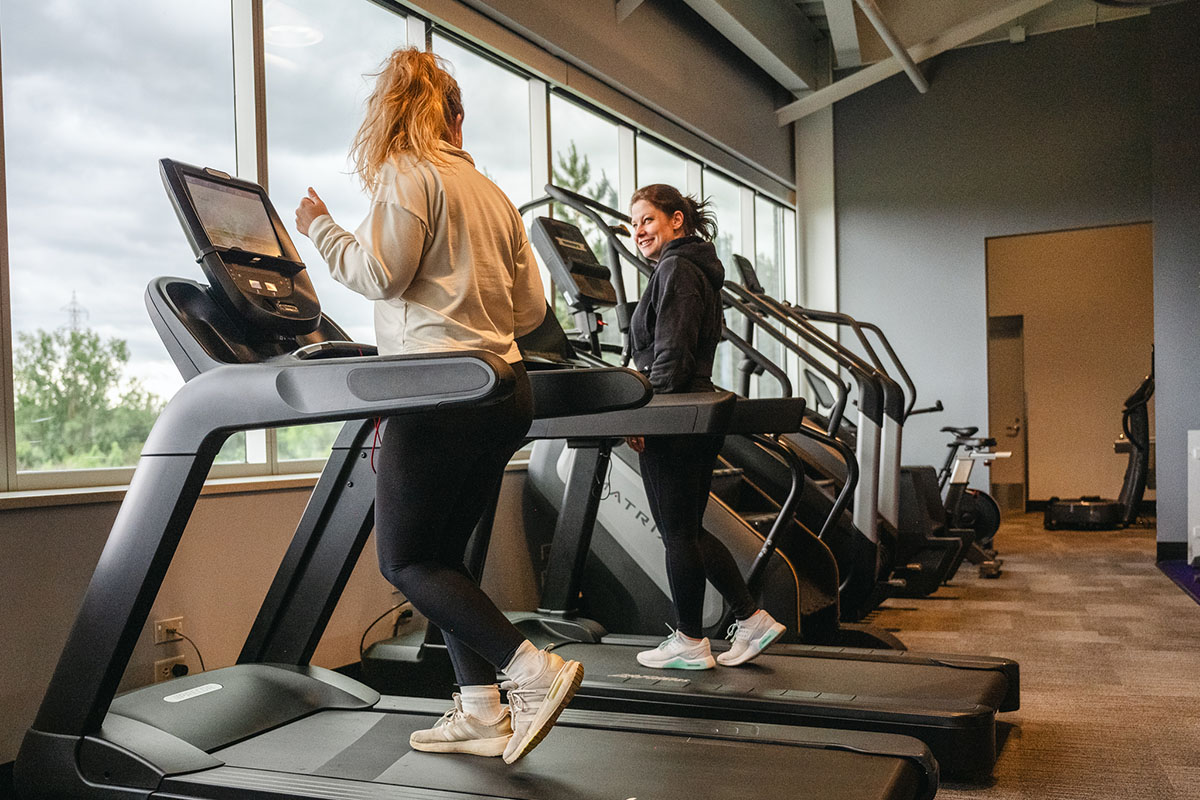Have you ever heard that doing cardio could ruin your muscle gains? Think again! Cardio is an essential part of an effective strength training routine and can help you achieve greater results in the weight room. Plus, it can help ward off chronic diseases like lung and heart disease, hypertension, obesity, and diabetes.
Let’s talk about how cardio workouts — specifically, treadmill exercises — can help you make the most of your gym routine, including:
- What makes treadmill workouts effective?
- The relationship between cardio and strength training
- How to incorporate treadmill exercises into your fitness program
- Tips to keep treadmill routines interesting
- The best treadmill workouts to supplement your strength routine
What makes treadmill workouts effective?
While there are several types of cardio machines in most gyms, treadmills are one of the most versatile options, for workouts from speed training, HIIT, and heart rate training to warm-ups and cooldowns.
Treadmill workouts that challenge your cardiovascular system are effective at improving your VO2 max, the gold standard measurement of cardio fitness. If your main fitness goal is to become stronger, build muscle, or be healthier, having a higher VO2 max is a sign you’re on the right track. VO2 max measures the amount of oxygen your body absorbs and uses during a workout — the higher your VO2 max, the greater your efficiency (and the longer you can work out).
Walking vs. running on the treadmill
Which is better: walking or running on the treadmill? There are benefits to both, so the answer comes down to your fitness level, age, preferences, and any personal limitations, injuries, or preexisting conditions.
Walking is a more accessible option for many, and it can also be an effective warm-up or cooldown option. If you’d like to up the intensity of your walk, consider increasing the speed or incline of the treadmill to get your heart rate up and engage your lower-body muscles, including your glutes, hips, hamstrings, and core. Walking on an incline requires your body to do more work than walking on a flat surface.
Walking is also a great option if you’d like to do your treadmill workout on the same day as your strength training because it’s less likely to exhaust you and saves energy for your lift.
Running, on the other hand, is a higher-intensity option that’s well-suited for days when you want to focus on cardio and endurance — or a light jog on the treadmill could be part of your active recovery plan.
How cardio supports strength training
Muscles require oxygen to function, and your cardiovascular system is responsible for delivering that oxygen — and other essential nutrients for muscle growth and recovery — to the rest of the body. If you focus solely on strength training and neglect cardio training, you could be leaving muscular gains on the table.
Plus, if you’re engaging in body recomposition — focusing on a combination of weight loss and muscle growth to decrease your body fat percentage — incorporating cardio in your fitness routine can help achieve your composition goals.

Can treadmill workouts help you build muscle?
Yes, treadmills are good for more than just weight loss; they can also help you build muscle in different ways than traditional strength training.
The type of exercise you do on the treadmill impacts what type of muscle fiber you develop. If you focus on longer duration, lower intensity treadmill training, you’ll target your Type I muscle fibers. If you work on sprints, you’ll target your Type II muscle fibers.
Fast- vs. slow-twitch muscles
The muscles in your body contain both Type I and Type II fibers. Some muscles, such as the large muscles that help move the body (like the glutes and quads) contain more Type II fibers, while the core muscles contain a higher percentage of Type I fibers.
Type I fibers provide a stabilizing effect and are slow to fatigue. Type II muscles provide a high amount of force and power, and are quicker to fatigue. That’s why we can sit upright for extended periods of time without our core muscles tiring, but sprinting at maximum pace is only sustainable for a short duration.
Here’s an example: People who excel in sprinting and jumping likely have a higher concentration of Type II fibers in their leg muscles, while those that excel in long-distance runs likely have more Type I fibers. Developing both types of muscle fibers can help you reach your maximum potential in terms of muscular development.

How to incorporate treadmill workouts into your strength training program
In general, we recommend performing your cardio on a different day than your strength training workouts — or, if your gym schedule doesn’t allow separate cardio and strength days, put your treadmill workout at the end of your lift. Why? Exhausting your muscles with a challenging treadmill workout before lifting could limit your performance and increase your risk of injury. Stick to treadmill warm-ups instead of a full treadmill workout before your lifts.
After a lift, doing a short treadmill sprint workout as a metabolic finisher can help you target Type II muscle fibers and kick-start recovery by increasing blood flow and delivering oxygen and nutrients to your muscles. This is because of a phenomenon known as elevated post-exercise oxygen consumption (EPOC), a phase following high-intensity exercise (such as sprinting) in which the body works to restore energy at the cellular level and flush out metabolic waste like lactate. EPOC also causes a natural rise in important hormones that are required for muscle development, like GH (growth hormone).

The best treadmill workouts for muscle gain
To build strength, the most effective treadmill workout involves a combination of speed, incline, and duration that challenges your muscles. While a treadmill workout is not technically resistance training, adjusting the settings on the machine can help target your muscles and make them grow.
The exact settings that provide that perfect amount of challenge will vary from person to person, based on your fitness level and your goals. Experiment with the incline, speed, and duration of your workouts to find what works for you. Not feeling challenged? Try going for a few extra minutes or increasing the incline by intervals of 1% until you find a combination that challenges you without hindering your form, at a pace you can maintain for several minutes.
Tips to make treadmill exercises work for you
If muscle growth is your goal, achieving EPOC after a treadmill workout is essential. If sprints aren’t your style, you can bring on the effects of EPOC by doing interval workouts that involve repeated bouts of high-intensity work followed by periods of recovery. Interval workouts can be done on separate days from your strength training, if they are longer than 5–10 minutes. This ensures you have enough energy for both cardio and strength training.
Treadmill workouts to supplement your strength routine
A final word on effective treadmill workouts
Treadmills are one of the most versatile workout tools in the gym — from warm-ups and HIIT to endurance and strength training. Whether you’re running to build lower-body strength or to achieve healthy muscular development, the best treadmill workouts for strength training challenge you without pushing you beyond your limits. Always remember to listen to your body and be patient as you figure out what works best for you and your fitness routine.
Want more workouts and fitness tips? Create personalized workout plans, get guidance from our expert Coaches, and track your progress in the Anytime Fitness App.



